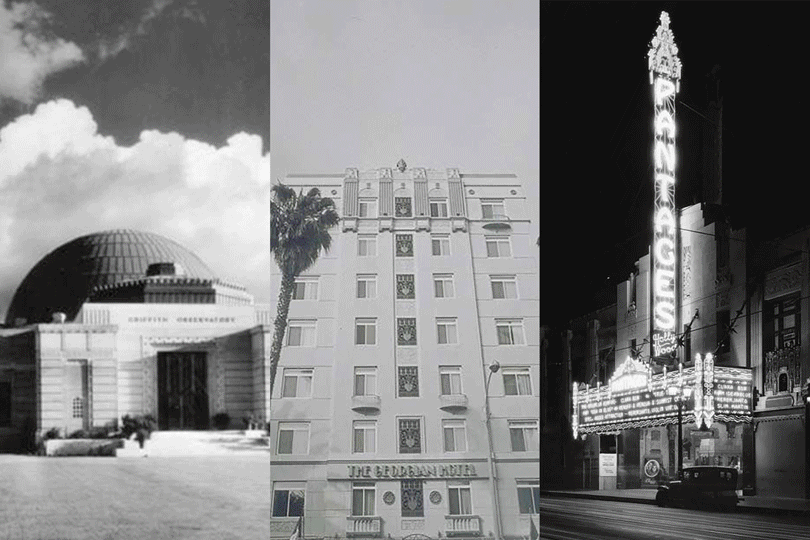Maybe this was a pressure-creating-diamonds situation.
Somehow in the 1930s, amid the immense stresses of economic collapse, natural disaster, Olympic anxiety and the looming shadow of World War II, Los Angeles built some of its best-loved architectural gems. The jaw-dropping lobby of the Pantages Theatre (1930), the hilltop domes of Griffith Observatory (1935), the grand halls of Union Station (1939) — all were produced in that harrowing decade.
How rough were the ’30s in L.A.? The Depression, beginning with the stock market crash in October 1929, put the brakes on new construction and farm production, pushing California unemployment to an estimated 28% in 1932. The City Council, meanwhile, was led by one of the most corrupt politicians in L.A. history, Mayor Frank Shaw.
The city did pull off the 1932 Summer Olympics, drawing a record 101,000 people to the Memorial Coliseum opening ceremony. But those Games drew only 1,332 athletes from 37 countries — half as many athletes as gathered for the 1928 Games in Amsterdam.
In 1933, the Long Beach quake killed more than 100 people and destroyed at least 70 schools. The 19-story Los Angeles General Medical Center was completed (and after decades mostly idle, is now being repurposed).
In 1934 and 1938, major floods along the Los Angeles, Santa Ana and San Gabriel rivers took scores of lives and prompted the Army Corps of Engineers to build Hansen Dam in the San Fernando Valley and encase 51 miles of the L.A. River in a concrete channel.
Begun in 1936 and completed in 1959, that channel might be among the city’s largest and least attractive man-made landmarks — in the words of historian Kevin Starr, “A tombstone of concrete.” But it does its job.
As the city weathered these changes, its signature industry shrunk, then bloomed, as movies (priced at about 25 cents) distracted the masses. The arrival of color deepened the spell, as did blockbusters like 1939’s “Gone With the Wind” and “The Wizard of Oz.”
About This Guide
Our journalists independently visited every spot recommended in this guide. We do not accept free meals or experiences. What should we check out next? Send ideas to guides@latimes.com.
The landmarks that went up during those years aren’t all great architectural innovations; many flow directly from the Art Deco and Streamline Moderne trends of the 1920s. But all carry hints about how Angelenos changed with the times.
As critic and author David Kipen has written: “If you don’t like the weather in San Francisco, they say, just wait five minutes. If you don’t like the architecture in Los Angeles, maybe give it ten.”
Here we take a year-by-year architectural stroll through the 1930s. You can enter most of these buildings, in some cases for free, in some cases by booking a tour, buying beer or seeing a show.
